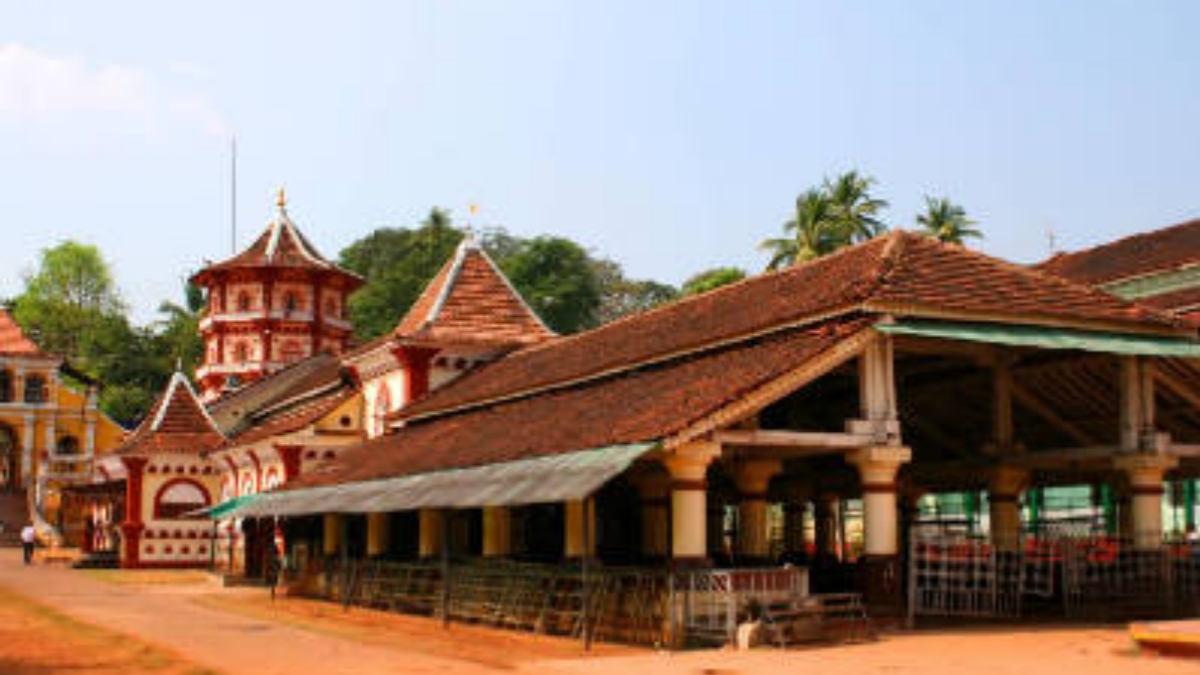The Shri Kamakshi Temple is located amidst the hills of the picturesque village of Shiroda and was built in the late 16th century.

In the village of Shiroda, a huge Mahadwar or temple gate leads to the Kamakshi temple complex known as ‘Sthal’ or more commonly called ‘Thal’. After passing under the Mahadwar, as one descends the flight of stairs. The temple, crowned by an octagonal, two-storied tower, with a golden Kalash perched on its Shikhar or peak, can be seen prominently.
According to mythology, Shri Kamakshi idol at Shiroda was brought from Guwahati in Assam, where she is known as Kamakhya and which is her original abode. The original temple of Shri Kamakshi was located in Raia in the Salcete Taluka. The deity was shifted to Shiroda between 1564 and 1568 because as a part of Goa Inquisition the Portuguese rulers demolished almost all the Hindu shrines. It is believed that a potter from the Raia accompanied by some worshippers of the deity smuggled the idol of Goddess Kamakshi across River Kushavati to safety in the Shiroda village. The new temple is located at Shiroda.

The Kamakshi temple Shiroda has a large Sabha Mandap or the traditional open entrance hall. In front of the temple, one can see a tall Deepasthambh or the lamp tower and a holy water tank. The square shaped chowk, Gan is used for conducting the Prasad ritual. The deity Shri Kamakshi can be seen in the Gabhara or the Sanctum Sanctorum in all its splendour.
The Kamakshi temple Shiroda also has Kshetrapals or affiliated protector deities like Shri Vetal and Shri Kalbhairav. Another shrine in the Prakar or precinct has deities like Shri Rayeshwar or Lord Shiva, Shri Lakshminarayana or Lord Vishnu with his consort, Goddess Laxmi, and Shri Shantadurga.
The vicinity of the Kamakshi temple has another small temple as is observed in most of the Goan Hindu temples, a shrine dedicated to Lord Rayeshwara or Shiva and the place where the temple is built has an ancient name “Shivagram”. Also within the temple, there are shrines dedicated to Lord Hanuman and Dattatreya. Images of Kalbhairava and Betal are also found on the left and right of the silver screen leading to the sanctuary which has the goddess on her pedestal.
The palanquin procession of the idol of Shri Kamakshi and Shree Laxmi Narayan is taken around the temple premises, every Amavasya or on the New Moon Day. Thousands of devotees throng the temple for darshan on this day. In addition, the palanquin procession of Shri Rayeshwar is held in the temple premises on Chaturdashi or pre-New Moon Day, and that of Shri Shantadurga on Panchami or fifth day after the New Moon Day.
In addition, the annual festivities are held at the temple during the Navratri/ Dussehra period and at the time of Jatra in spring. The Divja procession held during the Jatra, offers a spectacular site, where countless married women walk around the temple in the evening, holding Divja or clay lamps.


